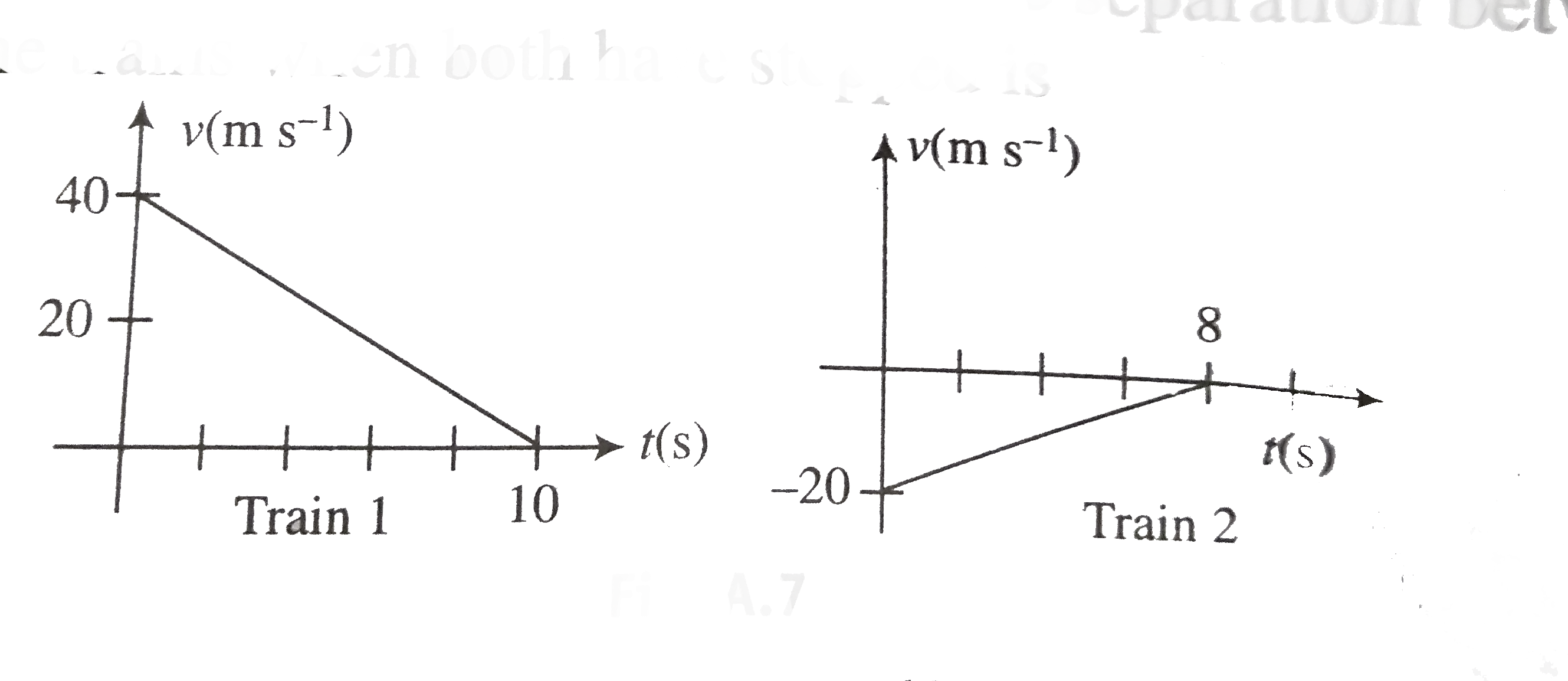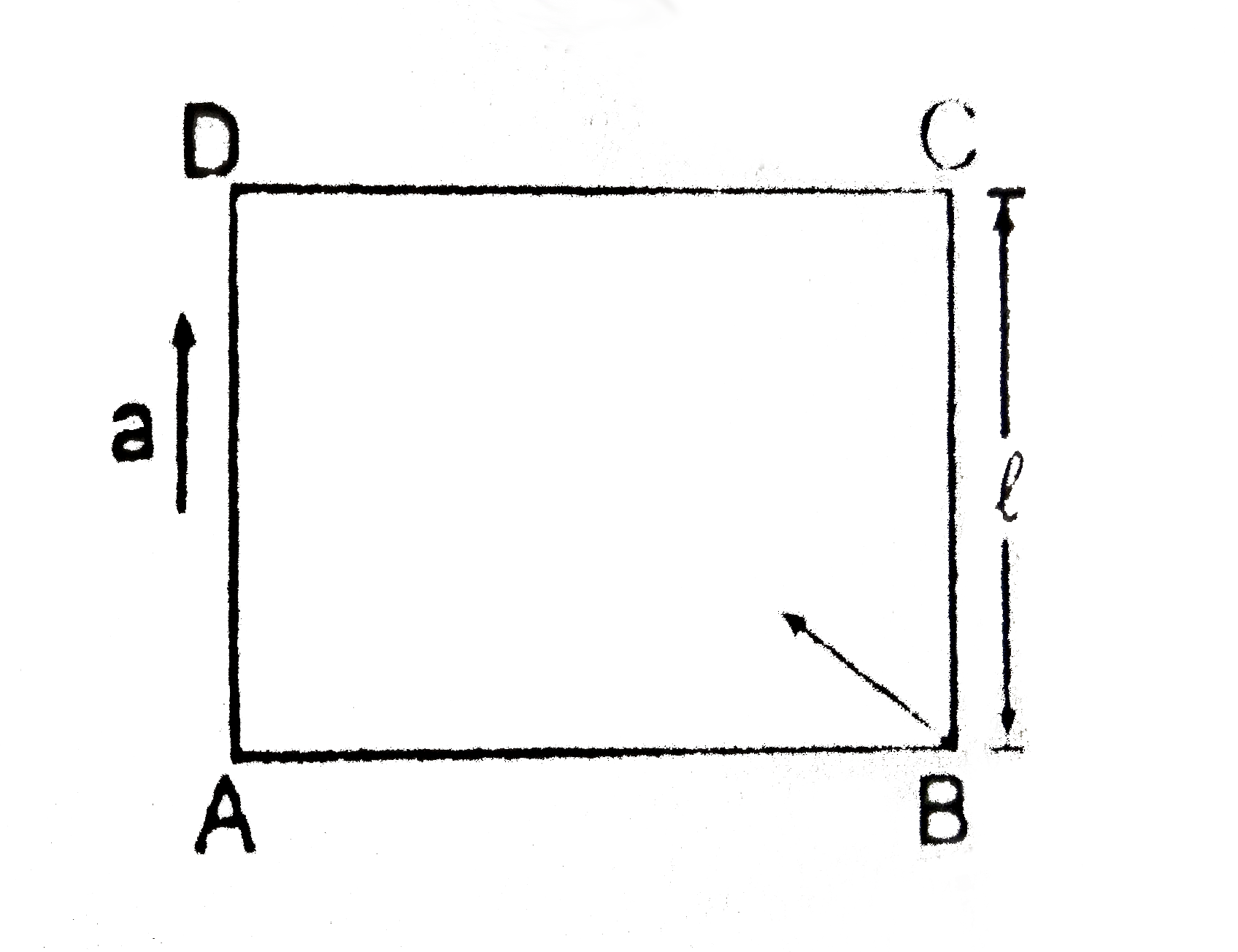Two balls of the same size but different matetials, rubber and iron are kept on the smooth floor of a moving train. The brakers are applied suddenly to stop the train . Will the balls start rolling? If so, in which direction? Will they move with the same speed? Give reasons for your answers.
To solve the question about the two balls (rubber and iron) on a moving train when the brakes are applied, we can break it down into several steps:
Step 1: Understand the Situation
The train is moving at a certain speed, and both balls (rubber and iron) are at rest relative to the train. When the brakes are applied suddenly, the train will decelerate and eventually stop.
Hint: Consider the concept of inertia and how it applies to objects in motion.
Step 2: Apply Newton's First Law of Motion
According to Newton's First Law of Motion, an object in motion will remain in motion unless acted upon by an external force. When the train stops suddenly, the balls will tend to continue moving forward due to their inertia.
Hint: Think about what happens to objects when the force acting on them changes suddenly.
Step 3: Determine the Direction of Motion
Since the train stops and the balls are not physically attached to the train, they will roll forward in the direction the train was moving before it stopped.
Hint: Visualize the motion of the balls relative to the train and the ground.
Step 4: Analyze the Speed of the Balls
Even though both balls are of the same size, they are made of different materials (rubber and iron), which means they have different masses. When they roll forward, they will not necessarily roll with the same speed because the force of friction and their masses will affect their acceleration.
Hint: Consider how mass and material properties affect the motion of an object when it is in motion.
Step 5: Conclusion
In conclusion, both balls will start rolling forward when the train stops. However, they will not move with the same speed due to their different masses and material properties.
Final Answer: Both balls will roll forward, but they will not move with the same speed.
The train is moving at a certain speed, and both balls (rubber and iron) are at rest relative to the train. When the brakes are applied suddenly, the train will decelerate and eventually stop.
According to Newton's First Law of Motion, an object in motion will remain in motion unless acted upon by an external force. When the train stops suddenly, the balls will tend to continue moving forward due to their inertia.
Since the train stops and the balls are not physically attached to the train, they will roll forward in the direction the train was moving before it stopped.
Even though both balls are of the same size, they are made of different materials (rubber and iron), which means they have different masses. When they roll forward, they will not necessarily roll with the same speed because the force of friction and their masses will affect their acceleration.
In conclusion, both balls will start rolling forward when the train stops. However, they will not move with the same speed due to their different masses and material properties.
Topper's Solved these Questions
- BOOK - NCERT EXEMPLAR ENGLISHCHAPTER - FORCE AND LAW OF MOTIONEXERCISE - LONG ANSWER3videos
FORCE AND LAW OF MOTION
- BOOK - NCERT EXEMPLAR ENGLISHCHAPTER - FORCE AND LAW OF MOTIONEXERCISE - LONG ANSWER3videos
FORCE AND LAW OF MOTION
- BOOK - NCERT EXEMPLAR ENGLISHCHAPTER - GRAVITATIONEXERCISE - LONG ANSWER TYPE QUESTIONS4videos
GRAVITATION
Similar Questions
A moving train is stopped by applying brakes. It stops after travelling 80m. If the speed of the train is doubled and retardation remain the same, it will cover a distance-
View SolutionA shpere of iron and another of wood, both of same radius are placed on the surface of water. State which of the two will sink? Give reason to your answer.
View SolutionTwo trains, which are moving along different tracks in opposite directions, are put on the same track due to a mistake. Their drivers, on noticing the mistake, start slowing down the trains when the trains are 300 m apart. Graphs given in figure show their velocities as function of time as the trains slow down. The separation between the trains when both have stopped is
 View Solution
View SolutionWind is blowing west to east along twoparallelracs. Two trais moving with the same speed in opposite directions on these tracks have the steam tracks. If one stream track isdouble than the other, what is the speed of each train ?
View SolutionTwo train are moving in a straight line in the same direction with a speed of 80 km/h. The relative velocity of one trains w.r.t. each other is
View SolutionTwo balls of different masses (one lighter and other heaver) are thrown vertically upwards with the same speed. Which one will pass through the point of projection in the downward direction with greater speed?
View SolutionWhich of the following has more interia: (a) a rubber ball and a stone of the same size? (b) a bicycle and a train (c) a five-repees coin and a one-rupee coin?
View SolutionIn the figure the top view of a compartment of a train is shown. A man is sitting at a corner 'B' of the compartment . The man throws a ball ( with respect to himself ) along the surface of the floor towards the corner 'D' of the compartment of the train. The ball hits the corner 'A' of the compartment, then find the time at which it hits A after the ball is thrown . Assume no other collision during motion and floor is smooth. The length of the compartment is given 'l' and the train is moving with constant acceleration 'a' in the direction shown in the figure.
 View Solution
View SolutionA train starting from rest is moving along a straight track with a constant acceleration fo 2.5m/s2. A passenger at rest in the train observes a particle of mass 2kg to be at rest on the floor with which it has a coefficient of friction μs=μk=0.5 .Six seconds after the starting of the train , a horizontal force F = 13N is applied to the particle for two seconds duration. The passenger now observes the particle to move perpendicular to the direction of the train.
(a) calculate the kinetic energy of the particle with respect to the passenger at the end of 8 seconds after starting of the train.
( b) repeat the calculate of ( a) for an observer on the ground.View SolutionA boy on a train of height h1 projects a coin his friend of height h2 standing on the same train, with a velocity v relative to the train, at an angle θ with horizontal. If the train moves with a constant velocity v' in the direction of x - motion of the coin, find the
(a) distance between the boys so that the second boy can catch the coin,
(b) maximum height attained by the coin, and
( c) speed with which the second boy catches the coin relative to himself (train) and ground.View Solution

